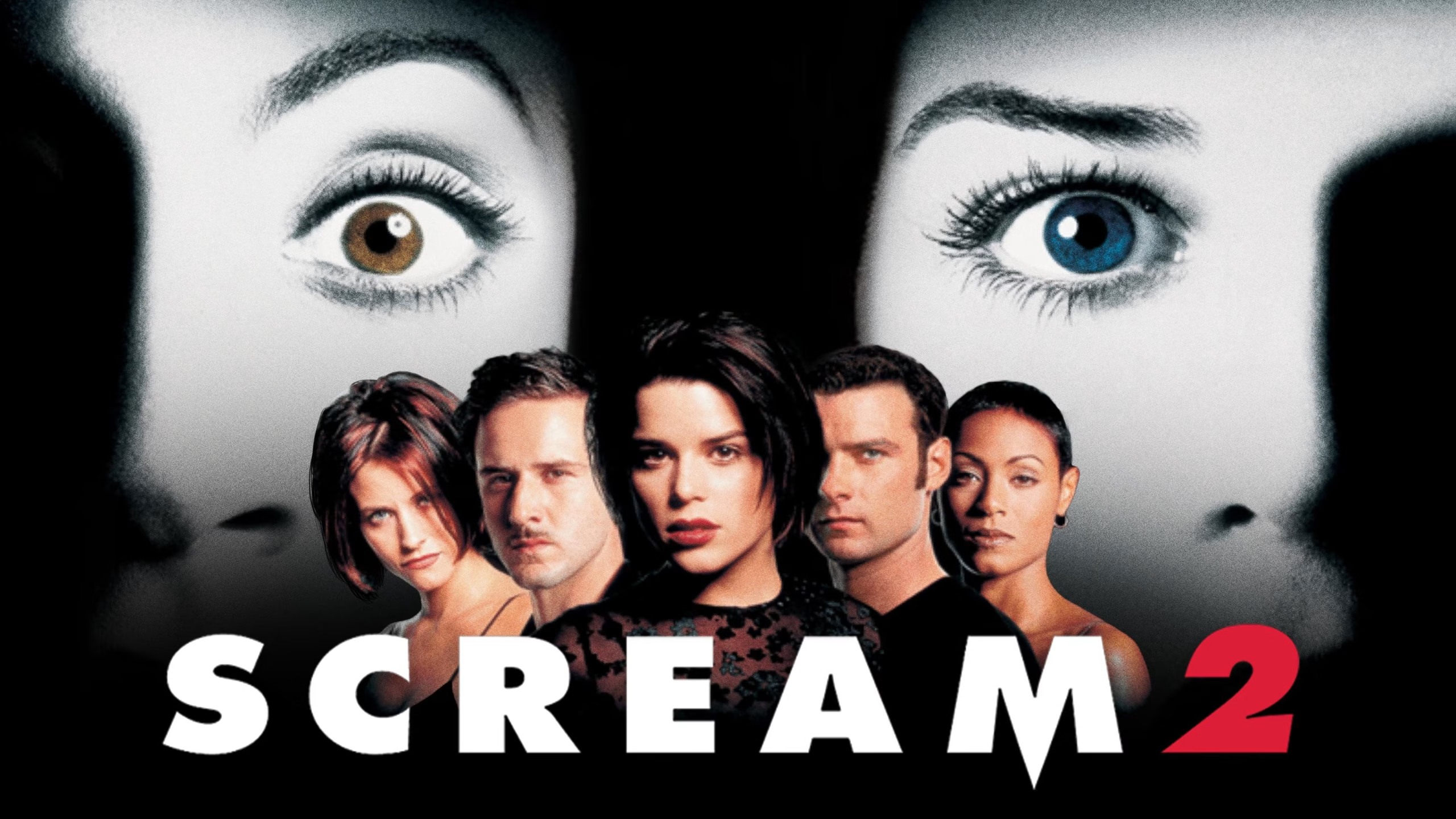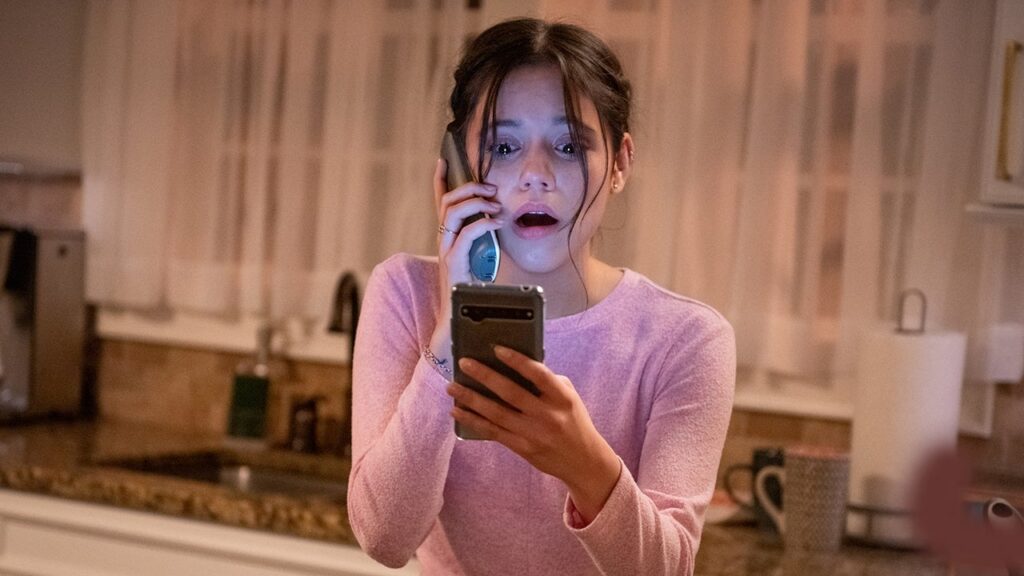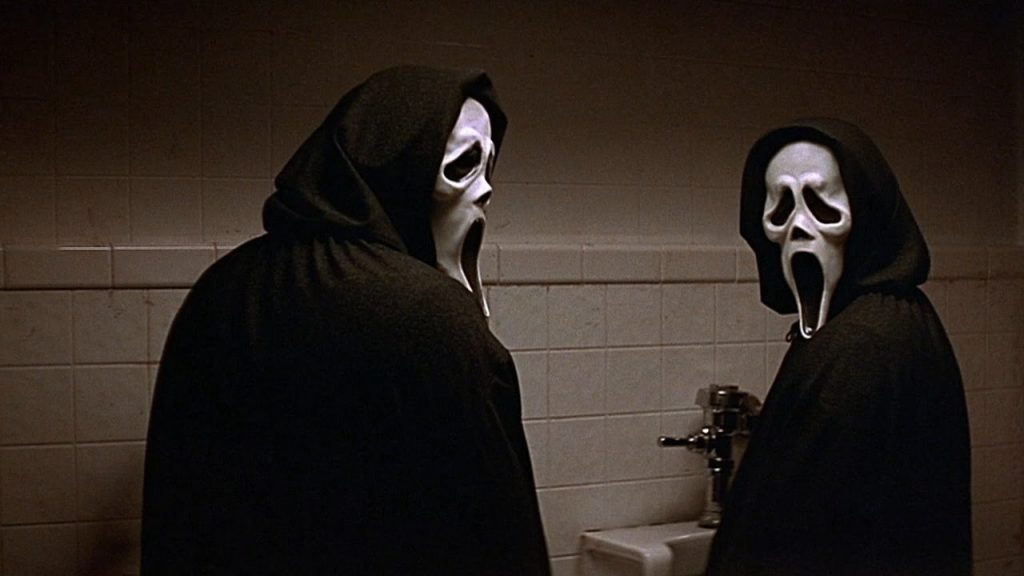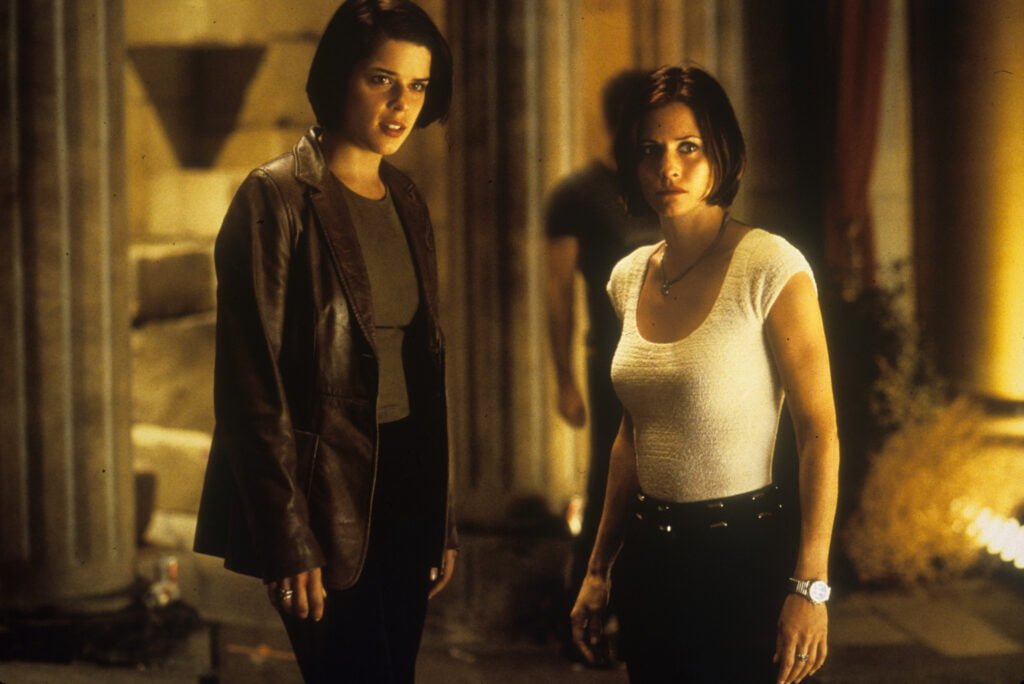Editorials
Revisiting ‘The Mists’ Horrific Twist Ending

Major spoilers ahead for The Mist. It’s a masterpiece, so if you haven’t seen it, watch it, then come back.
If you were to ask horror fans to call on a twist ending more harrowing than the ending of Frank Darabont’s The Mist, I would bet hand over fist that they would be hard-pressed to find one.
The Gut-Wrenching Final Scene of The Mist
Watching it alone at night, I remember it clear as day. The car running on empty finally peters out. It’s just the slate grey fog of death outside, and all too clearly on the inside our survivors. As the horrors whisper outside, the car’s occupants all carefully exchange looks, practically looking back at you as you watch, forcing you to become part of this horrible exit strategy. David shows the revolver, then counts out the bullets. Four. It’s not a scene of many words, but the ones Amanda says are louder than any screams could be.
“But there’s five of us.”
The last shot we get is of Billy looking up at his father. Eyes wide, before—
A low-to-the-ground exterior shot of the car. Staggered muzzle flares and muffled gunshot noises. And the silence after is only broken by staggered wails of pain from the surviving David. Back inside, he tries to finish himself off, spinning the empty chamber with the quiet clicks of the gun aimed at his own. When I first saw this scene, I almost got nauseous seeing that shot. Which is why it only gets worse; with no other way to die, he exits the car and calls for the mist’s denizens to take him…only to be greeted by the military, driving caravans of heavily armed soldiers and rescued civilians.

Emotional Impact of The Mist’s Twist Ending
After the second wave of jaw-dropping shock washed over me, I felt David’s collapse to his knees in my legs, and as the credits rolled, I was left mulling over the experience in abject horror for the next few days. And so began a long-running entanglement with the story. The Mist is my favorite Stephen King adaptation of all time, and it’s in no small part for how its final scene is so brilliantly orchestrated by both the cast, Rohn Schmidt, and director Frank Darabont. And the way my love of The Mist originally spurred me to learn more about Stephen King’s expanded universe and got me into The Dark Tower series, a rewatch of the film spurred me into finally reading the novella.
So, I came to discover that the ending of The Mist is drastically different from its source material.
The Novella’s Ambiguous Ending Explained
Those who have read the novella know it ends in a way that outright rejects the film’s conclusion. As David writes his final journal entries in a motel with his son, and the other survivors who escaped, things look just as bleak. Navigation in the mist means gambling on infrastructure still being intact, with a close call on a possibly collapsing bridge having already been evaded. The supplies are running low, and with their car out of gas, it means venturing out to refuel. He notes:
“But you mustn’t expect some neat conclusion. There is no And they escaped from the mist into the good sunshine of a new day; or When we awoke the National Guard had finally arrived; […] It is, I suppose, what my father always frowningly called “an Alfred Hitchcock ending,” by which he meant a conclusion in ambiguity that allowed the reader or viewer to make up his own mind about how things ended.”
Technically both things happen in the film’s finale, to a much bleaker extent in the wake of what David has done to spare his son and friends. But book David ends up sitting by a crackling radio awaiting some sign of life as he’s all out of options. The only things he hears are two words, which he whispers into the ears of his dreaming son: ‘Hartford’, and ‘hope.’

Why Did The Mist’s Movie Change the Ending?
Truly, for a film that is so accurate up until that point, with so many scenes lifted whole cloth and recreated perfectly from the text (the spider-silk scene still makes me shiver in both film and on the page), it begs the question: Why change the ending?
Well, there’s the obvious answer of it simply being the best choice on a technical level. Darabont has mentioned in previous interviews that the movies many alternate endings didn’t resonate on an emotional level (even King thinks it hits harder than his penning). And the fact that one of them involved a cut to black and a gunshot after Billy says “Daddy?” makes me thankful the iron hand of studio interference didn’t force them to choose one. The Mist is one of those movies of a perfect length, no dragging, no rushing, and the delicate balancing act of editing the rest of the film sets you up on makes for the greatest gut punch when it all comes tumbling down in that final scene.
Themes of Hope in The Mist’s Film vs. Novella
The movie is the most memorable version because its ending shows the primary horror of the mist is what happens when the fog is lifted, and you’re forced to confront the reality of the things. The question then is what happens once you get what you’re craving? Can you go back to life as usual having seen what you’ve seen? Can those “puny doors of human perception,” as David puts it, tolerate it having seen what they’ve seen?
In the book however, we never see that Mist lift. There’s the very Lovecraftian possibility that the time of man came and went without much ceremony from the powers that destroyed it. It might never come back. So, what do you have when it doesn’t pass, and the monsters aren’t killed? The only thing that’s left when Pandora’s box has been emptied: hope. And how much is hope worth?

Philosophical Differences in The Mist’s Endings
So beyond the practical difference, I would posit a philosophical difference in the endings, or at the very least an inversion of the theme. Both iterations of The Mist are fundamentally about hope, but in two very different regards: hope is given up in the film, and the cosmic irony almost immediately punishes David for only needing to stay hopeful for a few more moments. In the other, David’s hopefulness, though uncertain, still stands up to the insurmountable odds ahead, possibly leading to doom.
There’s certainly room for the ending to mean the death of David and his crew. Depending on how you interpret the novella, David is shaded as having already gone mad. He emits loud, uncontrollable laughter in moments of crisis, such as the death of the bagboy, sometimes seeming to have already succumbed to the mist and its unreality.
David’s Madness and Parallels to Miss Carmody
This makes him a stronger parallel to Miss Carmody. One of Stephen King’s quintessential villains, Carmody’s madness is uncontained and outwardly hysterical, harassing and assailing whomever she sees as being due for judgment by the wrath of God. But as composed as David is, there are cracks in his composure that suggest the mist could equally pollute his mind; after all, nobody is immune. By the end of the book, is David just as deluded as Miss Carmody? Were their chances ever any better on their own? Does his misplaced hope let him walk off into the mist to risk it all?
The book’s ending is scary in its own right, simply because of the common ground the two versions share. Both share themes of hope, more specifically, the danger of hope and either losing it, or losing yourself to it. Which fate is more painful is still up for debate.
Editorials
‘The Woman in Black’ Remake Is Better Than The Original

As a horror fan, I tend to think about remakes a lot. Not why they are made, necessarily. That answer is pretty clear: money. But something closer to “if they have to be made, how can they be made well?” It’s rare to find a remake that is generally considered to be better than the original. However, there are plenty that have been deemed to be valuable in a different way. You can find these in basically all subgenres. Sci-fi, for instance (The Thing, The Blob). Zombies (Dawn of the Dead, Evil Dead). Even slashers (The Texas Chainsaw Massacre, My Bloody Valentine). However, when it comes to haunted house remakes, only The Woman in Black truly stands out, and it is shockingly underrated. Even more intriguingly, it is demonstrably better than the original movie.
The Original Haunted House Movie Is Almost Always Better
Now please note, I’m specifically talking about movies with haunted houses, rather than ghost movies in general. We wouldn’t want to be bringing The Ring into this conversation. That’s not fair to anyone.
Plenty of haunted house movies are minted classics, and as such, the subgenre has gotten its fair share of remakes. These are, almost unilaterally, some of the most-panned movies in a format that attracts bad reviews like honey attracts flies.
You’ve got 2005’s The Amityville Horror (a CGI-heavy slog briefly buoyed by a shirtless, possessed Ryan Reynolds). That same year’s Dark Water (one of many inert remakes of Asian horror films to come from that era). 1999’s The House on Haunted Hill (a manic, incoherent effort that millennial nostalgia has perhaps been too kind to). That same year there was The Haunting (a manic, incoherent effort that didn’t even earn nostalgia in the first place). And 2015’s Poltergeist (Remember this movie? Don’t you wish you didn’t?). And while I could accept arguments about 2001’s THIR13EN Ghosts, it’s hard to compete with a William Castle classic.
The Problem with Haunted House Remakes
Generally, I think haunted house remakes fail so often because of remakes’ compulsive obsession with updating the material. They throw in state-of-the-art special effects, the hottest stars of the era, and big set piece action sequences. Like, did House on Haunted Hill need to open with that weird roller coaster scene? Of course it didn’t.
However, when it comes to haunted house movies, bigger does not always mean better. They tend to be at their best when they are about ordinary people experiencing heightened versions of normal domestic fears. Bumps in the night, unexplained shadows, and the like. Maybe even some glowing eyes or a floating child. That’s all fine and dandy. But once you have a giant stone lion decapitating Owen Wilson, things have perhaps gone a bit off the rails.

The One Big Exception is The Woman in Black
The one undeniable exception to the haunted house remake rule is 2012’s The Woman in Black. If we want to split hairs, it’s technically the second adaptation of the Susan Hill novel of the same name. But The Haunting was technically a Shirley Jackson re-adaptation, and that still counts as a remake, so this does too.
The novel follows a young solicitor being haunted when handling a client’s estate at the secluded Eel Marsh House. The property was first adapted into a 1989 TV movie starring Adrian Rawlings, and it was ripe for a remake. In spite of having at least one majorly eerie scene, the 1989 movie is in fact too simple and small-scale. It is too invested in the humdrum realities of country life to have much time to be scary. Plus, it boasts a small screen budget and a distinctly “British television” sense of production design. Eel Marsh basically looks like any old English house, with whitewashed walls and a bland exterior.
Therefore, the “bigger is better” mentality of horror remakes took The Woman in Black to the exact level it needed.

The Woman in Black 2012 Makes Some Great Choices
2012’s The Woman in Black deserves an enormous amount of credit for carrying the remake mantle superbly well. By following a more sedate original, it reaches the exact pitch it needs in order to craft a perfect haunted house story. Most appropriately, the design of Eel Marsh House and its environs are gloriously excessive. While they don’t stretch the bounds of reality into sheer impossibility, they completely turn the original movie on its head.
Eel Marsh is now, as it should be, a decaying, rambling pile where every corner might hide deadly secrets. It’d be scary even if there wasn’t a ghost inside it, if only because it might contain copious black mold. Then you add the marshy grounds choked in horror movie fog. And then there’s the winding, muddy road that gets lost in the tide and feels downright purgatorial. Finally, you have a proper damn setting for a haunted house movie that plumbs the wicked secrets of the wealthy.
Why The Woman in Black Remake Is an Underrated Horror Gem
While 2012’s The Woman in Black is certainly underrated as a remake, I think it is even more underrated as a haunted house movie. For one thing, it is one of the best examples of the pre-Conjuring jump-scare horror movie done right. And if you’ve read my work for any amount of time, you know how positively I feel about jump scares. The Woman in Black offers a delectable combo platter of shocks designed to keep you on your toes. For example, there are plenty of patient shots that wait for you to notice the creepy thing in the background. But there are also a number of short sharp shocks that remain tremendously effective.
That is not to say that the movie is perfect. They did slightly overstep with their “bigger is better” move to cast Daniel Radcliffe in the lead role. It was a big swing making his first post-Potter role that of a single father with a four-year-old kid. It’s a bit much to have asked 2012 audiences to swallow, though it reads slightly better so many years later.
However, despite its flaws, The Woman in Black remake is demonstrably better than the original. In nearly every conceivable way. It’s pure Hammer Films confection, as opposed to a television drama without an ounce of oomph.
Editorials
Is ‘Scream 2’ Still the Worst of the Series?

There are only so many times I can get away with burying the lede with an editorial headline before someone throws a rock at me. It may or may not be justified when they do. This article is not an attempt at ragebaiting Scream fans, I promise. Neither was my Scream 3 article, which I’m still completely right about.
I do firmly believe that Scream 2 is, at the very least, the last Scream film I’d want to watch. But what was initially just me complaining about a film that I disregard as the weakest entry in its series has since developed into trying to address what it does right. You’ve heard of the expression “jack of all trades, master of none”, and to me Scream 2 really was the jack of all trades of the franchise for the longest time.
It technically has everything a Scream movie needs. Its opening is great, but it’s not the best of them by a long shot. Its killers are unexpected, but not particularly interesting, feeling flat and one-dimensional compared to the others. It has kills, but only a few of them are particularly shocking or well executed. It pokes fun at the genre but doesn’t say anything particularly bold in terms of commentary. Having everything a Scream movie needs is the bare minimum to me.
But the question is, what does Scream 2 do best exactly? Finding that answer involves highlighting what each of the other sequels are great at, and trying to pick out what Scream 2 has that the others don’t.

Scream 3 Is the Big Finale That Utilizes Its Setting Perfectly
Scream as a series handily dodges the trap most horror franchises fall into: rehashing and retreading the same territory over and over. That’s because every one of its films are in essence trying to do something a little different and a little bolder.
Scream 3 is especially bold because it was conceived, written, and executed as the final installment in the Scream series. And it does that incredibly well. Taking the action away from a locale similar to Woodsboro, Scream 3 tosses our characters into the frying pan of a Hollywood film production. Despite its notorious number of rewrites and script changes (one of which resulted in our first solo Ghostface), it still manages to be a perfect culmination of Sidney Prescott’s story.
I won’t repeat myself too much (go read my previous article on the subject), but 3 is often maligned for as good a film as it turned out to be. And for all of its clunkier reveals, and its ghost mom antics, it understands how to utilize its setting and send its characters off into the sunset right.
Scream 4’s Meta Commentary Wakes Scream from a Deep Sleep
As Wes Craven’s final film, Scream 4 has a very special place in the franchise. It was and still is largely adored for bringing back the franchise from a deep 11-year sleep. With one of the craziest openings in any horror film, let alone a Scream film, it sets the tone for a bombastic return and pays off in spades with the journey it takes us on.
Its primary Ghostface Jill Roberts is a fan favorite, and for some people, she is the best to ever wear the mask. Its script is the source of many memorable moments, not the least of which is Kirby’s iconic rapid-fire response to the horror remakes question. And most importantly, it makes a bold and surprisingly effective return for our main trio of Sidney, Dewey, and Gale, whose return didn’t feel trite or hammy when they ended up coming back to Woodsboro for more.
Craven’s work on 4 truly understands the power its predecessors had exerted on the horror genre, both irreverent in its metacommentary and celebratory of the Scream series as a whole. The film is less of a love letter to the genre and more of a kicking down of the door to remind people what Scream is about. 4’s story re-established that Scream isn’t going away, no matter how long it takes for another film, and no matter how many franchises try to take its place.

Scream 5 & 6 Is Radio Silence’s Brutal and Bloody Attitude Era
Put simply, Scream 5 and 6’s strong suit was not its characters. It was not its clever writing. The Radio Silence duology in the Scream series excelled in one thing: beating the hell out of its characters.
Wrestling fans (of which there is an unsurprising amount of crossover with horror fans) will know why I call it the Attitude Era. Just like WWE’s most infamous stretch of history, Radio Silence brought something especially aggressive to their entries. And it’s because these films were just brutal. Handing the reins to the series, Bettinelli-Olpin and Gillet gifted a special kineticism to the classic Scream chase sequences, insane finales, and especially its ruthless killers.
All five of the Ghostfaces present in 5 and 6 are the definition of nasty. They’re unrelenting, and in my humble opinion, the freakiest since the original duo of Stu Macher and Billy Loomis. Getting to hear all the air get sucked out of the room as Dewey is gutted like a fish in 5 was still an incredible moment to experience in theatres, and it’s something I don’t think would have happened if the films were any less mean and any less explosively violent.

So, What Does Scream 2 Do Best Exactly?
So now, after looking at all these entries and all of their greatest qualities, what does Scream 2 have that none of the others do? What must I concede to Scream 2?
Really great character development.
Film is a medium of spectacle most of the time, and this is reflected in how we critique and compliment them. It affects how we look back on them, sometimes treating them more harshly than they deserve because they don’t have that visual flash. But for every ounce of spectacle Scream 2 lacks, I have to admit, it does an incredible job of developing Sidney Prescott as a character.
On a rare rewatch, it’s clear Neve Campbell is carrying the entirety of Scream 2 on her back just because of how compelling she makes Sidney. Watching her slowly fight against a tide of paranoia, fear, and distrust of the people around her once more, watching her be plunged back into the nightmare, is undeniably effective.
It’s also where Dewey and Gale are really cemented as a couple, and where the seeds of them always returning to each other are planted. Going from a mutual simmering disrespect to an affectionate couple to inseparable but awkward and in love is just classic; two people who complete each other in how different they are, but are inevitably pulled back and forth by those differences, their bond is one of the major highlights throughout the series.

Maybe All the Scream Films Are Just Good?
These three characters are the heart of the series, long after they’ve been written out. I talk a big game about how Scream 3 is the perfect ending for the franchise, but I like to gloss over the fact that Scream 2 does a lot of the legwork when it comes to developing the characters of Dewey, Gale, and especially Sidney.
Without 2, 3 just isn’t that effective when it comes to giving Sidney her long deserved peace. Without 2, the way we see Sidney’s return in 4 & 5 doesn’t hit as hard. All of the Scream movies owe something to Scream 2 in the same way they owe something to the original Scream. I think I’ve come to a new point of view when it comes to the Scream franchise: maybe there is no bad entry. Maybe none of them have to be the worst. Each one interlinks with the others in their own unique way.
And even though I doubt I will ever really love Scream 2, it has an undeniable strength in its character writing that permeates throughout the whole franchise. And that at the very least keeps it from being the worst Scream film.























